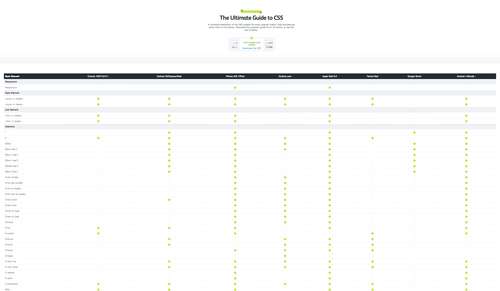
The following is a guest post from fnBlog Contributor ShareBloc, a community of professionals that shares, curates and discusses business content that matters. This post, originally posted on ShareBloc’s blog.
If 2013 is the year of content marketing then 2014 is going to be the year of media-oriented content marketing. What do we mean by media-oriented content marketing (or MOCM)?
We believe that content marketing increasingly stands alone as a media product. For example, one way to advertise a sports car is to put an ad adjacent to a content piece that targets your customer base, like a financial news report. A more effective tactic would be make the ad the content itself, like the series of films made by BMW in 2001-2002, which prompted people to share these videos via email, marking it as one of the first commercially-oriented viral videos.
Media-oriented content marketing must follow these three principles:
- It is not one-way. Most ads today are still one-way. Consider the radio ad or the billboard. No data about the consumer is pushed back to the marketer. A MOCM, however, takes into account page views and clickthroughs, Facebook likes and the number of retweets.
- It is not static but dynamic. Users interacting with the content should change the content itself. Sometimes this change is subtle like spurring conversations through commenting. Other times, the user actually impacts the content directly, much like the Lays Chips flavor contest.
- Its primary goal is not to sell. Consumers are becomingly increasingly sophisticated so they may reject a content marketing piece that is too self-promotional. However, if they recognize the content as a worthwhile standalone media product, they would be willing to share and promote it.
The rise of MOCMs lends itself to three growing trends within content marketing.
Content as Education
Marketers benefit greatly by educating their consumers on not only their products but also its applications. This is not a new thing; infomercials have been around for some time. But online content has made educational MOCMs much more compelling. The consumer space is leading the way here. For example, McDonald’s worked with VISA to put out a financial budgeting tool for its employees, which unfortunately had unintended consequences.
The B2B space has traditionally used white papers and case studies as their “content as education” tactic. Companies like HubSpot routinely publish content on their blogs that acts only to educate the market on best practices. One of the better educational MOCMs I’ve used personally has been this handy chart provided by email marketing provider, Campaign Monitor.
While I was building out ShareBloc’s email, I looked online for some pointers on how best to utilize CSS elements. Does this guide help Campaign Monitor sell more subscriptions to its service? Probably. More importantly, it has permanently ingrained a relationship between email marketing best practices and Campaign Monitor in this professional’s mind.
Content as Entertainment
While our target user is a working professional, we recognize professionals are just normal people in the office. They like funny videos or computer gamesbecause they get bored at work. Entertainment-based MOCMs has already been a staple for the B2C market. Consider this high production value video produced by Chipotle.
As a standalone media product, it is entertaining and tugs at the heartstrings. You may notice not once does it mention burritos, which if I recall, is what Chipotle sells. Instead, it associates the Chipotle logo with sustainable and organic farming and foods, a far more clever and subtle tactic.
Entertainment-based MOCM works which is why we are seeing more enterprise marketers utilize this tactic. Sometimes the content can be silly, like thesememes produced by Marketo. Or it can be more extravagant, like the videos produced by Microsoft starring Ricky Gervais’ insufferable David Brent.
Or it can be a Sim City clone, like IBM’s City One, which demonstrates IBM’s ubiquitous IT infrastructure and communications network through game mechanics.
Content as Advocacy
Content marketing can also do good as well. Most leading corporations participate in philanthropy and charity in some meaningful way. It’s no surprise that you are now seeing their content marketing reflect their advocacy. On the consumer side, you see advocacy represented in the pink jerseys on NFL players for breast cancer awareness, or this great Dove production about society’s perception of beauty.
The enterprise space has also started getting more involved with advocacy-based MOCMs. There are obvious and not-so-obvious benefits for a corporation. If Google supports gay rights, for example, it is huge benefit for gay-rights advocates. But it also reinforces Google’s open culture to current and potential employees. One of the oldest and most successful advocacy-based MOCM examples in B2B is Intel’s campaign around education. In addition to providing grants for K-12 students and sponsoring engineering challenges, Intel produces high quality teacher’s aids.
MOCMs Are Here to Stay
B2C content marketing consistently blurs the lines between marketing and content as a standalone media product because its consumers are sophisticated. B2B content marketing needs to go the same way. The latest statistics from the CMI says content marketing’s primary objective is to create brand awareness, not to sell products. This is a good thing. As consumers in and outside the office, we’re overwhelmed with content. It’s to our benefit that quality is now trumping quantity.
Want to learn more about ShareBloc? Check out ShareBloc’s Blog or connect with them on Twitter @ShareBloc







